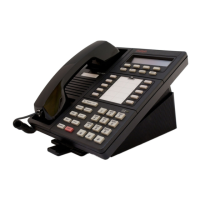MERLIN LEGEND Communications System Release 6.1
System Programming Guide
555-661-111
Issue 1
August 1998
Programming Basics
Page 1-71Product Enhancements
1
■ Advice and feedback administration screens for new Release 3.0
functionality
■ PCMCIA Memory Card Interface (a Release 3.0 processor board required)
allowing:
— System software installation
— System software upgrade
— 800 GS/LS-ID port module firmware upgrade
— Integrated backup and restore of translations
— Automatic and manual options for backup and restore are available
on the system. Automatic backup can be scheduled weekly or daily
to fit the customer’s needs.
■ Inter-digit dialing timer values are programmable
■ Inspection of Lines/Trunks displays only those lines and trunks configured
on system rather than all 80 facilities
■ Extensions and facilities in Maintenance Busy (both manual and automatic)
can be identified by the maintenance monitor
User Features 1
Security 1
The Remote Access feature allows people at remote locations to enter the system
by dialing the number of a line or trunk designated for remote access. The system
can be programmed to require the remote user to dial a barrier code (a type of
password) after reaching the system. In earlier versions, the systemwide barrier
code length is fixed at four digits. Release 3.0 allows a systemwide barrier code
length ranging from a minimum of four digits to a maximum of 11 digits, with a
factory setting of seven digits. SMDR records are enhanced to provide information
for remote access calls. If the remote access call is received on a facility providing
Caller ID information (see below), the SMDR report can help trace the call.
Caller ID 1
Caller information (telephone number) is furnished to MLX display telephones by
an 800 GS/LS-ID module using the LS (loop-start) option. This allows customers
to screen calls before answering the phone, as well as providing calling party
information for use with various applications. This function is available only when
the customer subscribes to caller identification service from the telephone
company, if the telephone company supports that service.
Shared System Access (SSA) 1
A telephone may have up to 27 Shared SA buttons to expand extension
coverage.

